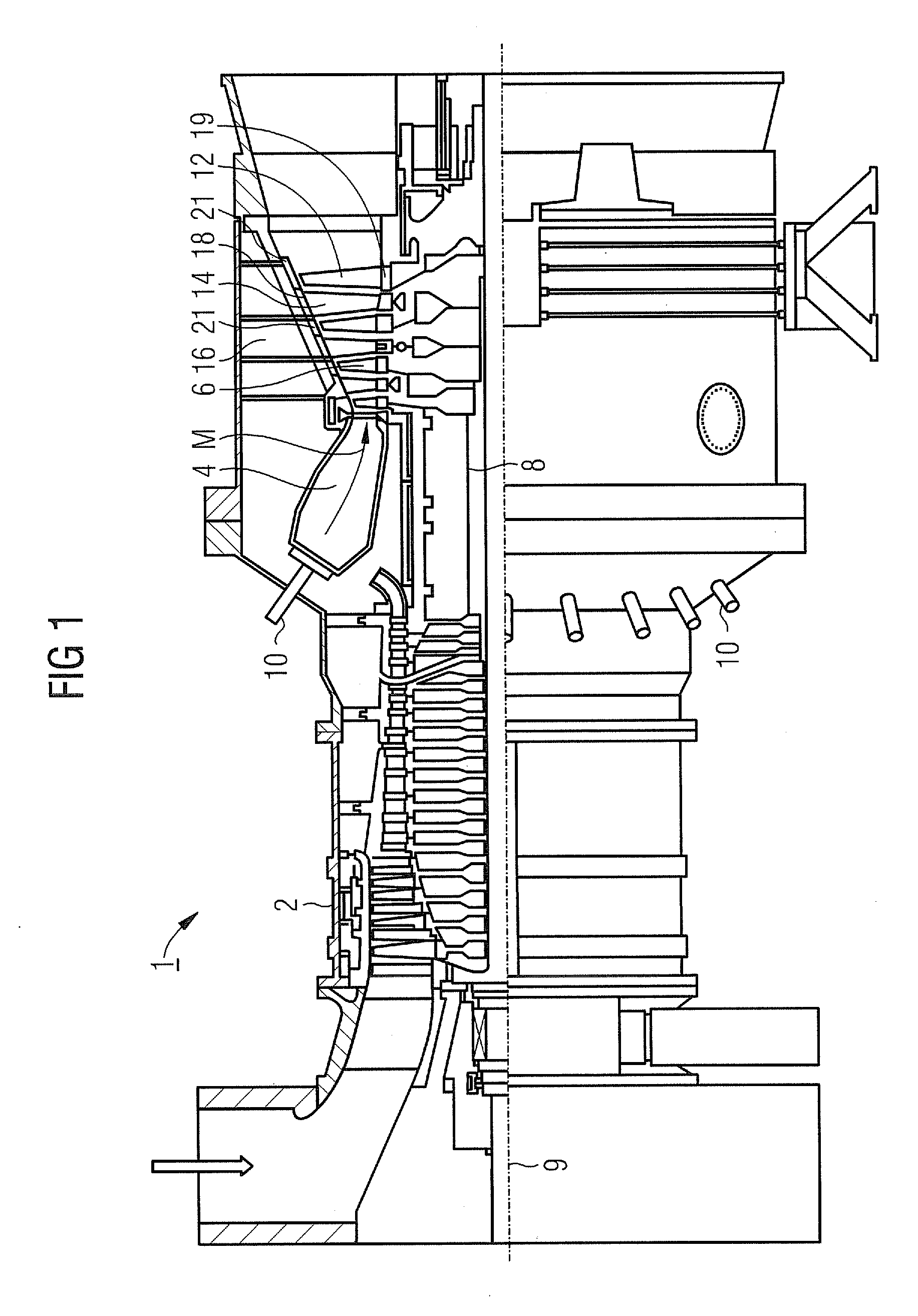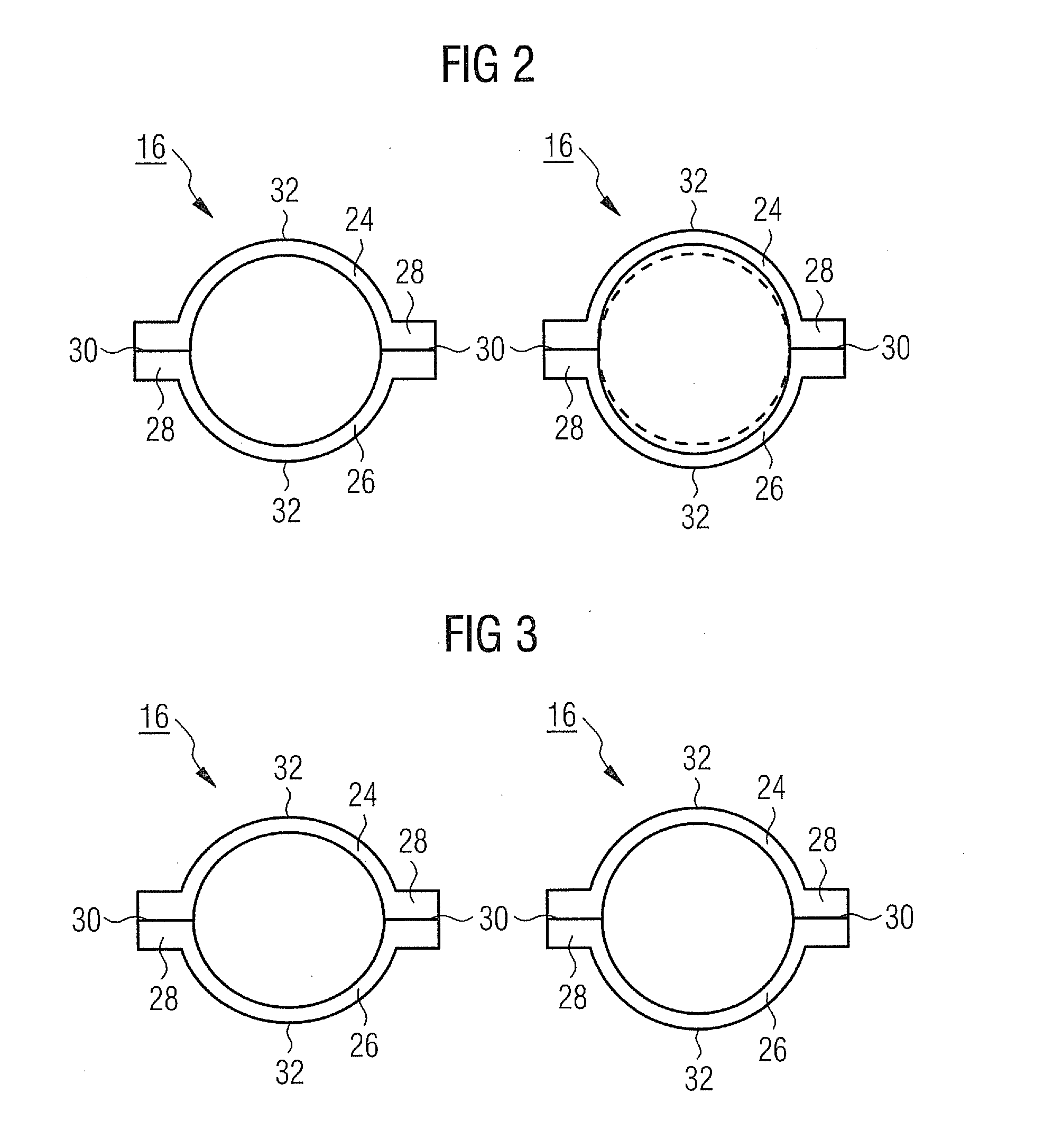Gas turbine
a technology of gas turbines and turbine blades, applied in the direction of machines/engines, stators, liquid fuel engines, etc., can solve the problems of high thermal load, considerable efficiency loss, and high thermal load on components and parts subject to these temperatures, so as to reduce flow losses, reduce radial gaps, and high efficiency
- Summary
- Abstract
- Description
- Claims
- Application Information
AI Technical Summary
Benefits of technology
Problems solved by technology
Method used
Image
Examples
Embodiment Construction
[0024]The gas turbine 1 as shown in FIG. 1 has a compressor 2 for combustion air, a combustion chamber 4 and a turbine unit 6 for driving the compressor 2, and for driving a generator, which is not illustrated, or a working machine. For this purpose, the turbine unit 6 and the compressor 2 are arranged on a common turbine shaft 8, which is also referred to as the turbine rotor, to which the generator and / or the working machine are / is also connected, and which is mounted such that it can rotate about its turbine axis 9. The combustion chamber 4, which is in the form of an annular combustion chamber, is fitted with a number of burners 10 for combustion of a liquid or gaseous fuel.
[0025]The turbine unit 6 has a number of rotor blades 12 which can rotate and are connected to the turbine shaft 8. The rotor blades 12 are arranged in the faun of a ring on the turbine shaft 8 and therefore foam a number of rotor blade rows. Furthermore, the turbine unit 6 comprises a number of stationary st...
PUM
 Login to View More
Login to View More Abstract
Description
Claims
Application Information
 Login to View More
Login to View More - R&D
- Intellectual Property
- Life Sciences
- Materials
- Tech Scout
- Unparalleled Data Quality
- Higher Quality Content
- 60% Fewer Hallucinations
Browse by: Latest US Patents, China's latest patents, Technical Efficacy Thesaurus, Application Domain, Technology Topic, Popular Technical Reports.
© 2025 PatSnap. All rights reserved.Legal|Privacy policy|Modern Slavery Act Transparency Statement|Sitemap|About US| Contact US: help@patsnap.com



